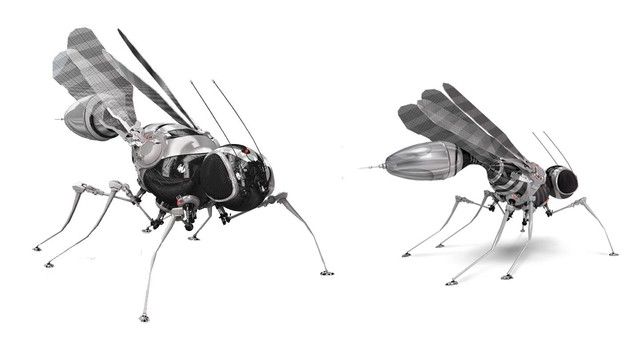Estonia's Winged Guardians: A Future of Bio-Robotic Defense in the Age of Modern Warfare
In the tranquil silence of the Northern European landscape, a new sound could soon be heard - the collective buzz of Estonia's defense force. Not the roar of tanks or the rumble of artillery, but the high-frequency buzz of a myriad of micro bio-robotic creatures patrolling the country&

In the tranquil silence of the Northern European landscape, a new sound could soon be heard - the collective buzz of Estonia's defense force. Not the roar of tanks or the rumble of artillery, but the high-frequency buzz of a myriad of micro bio-robotic creatures patrolling the country's airspace. The year is 2035, and Estonia, a small nation with a rich history and an innovative mindset, has decided to reimagine its national defense strategy.
Amid rising geopolitical tensions with Russia, the leaders of Estonia, known for their forward-thinking digital governance and technological prowess, have pivoted from traditional military hardware to harness the power of bio-robotics. Instead of investing in tanks and heavy artillery, they have unleashed an army of flying micro-robots, each no larger than a common mosquito.
This swarm, dubbed the 'Mos Squadron', is not a force of destruction but a shield of protection. Each 'Mos' is equipped with cutting-edge sensor technology, capable of detecting chemical, biological, and radiological threats. They patrol the skies in coordinated clusters, blending seamlessly into the natural environment, almost indistinguishable from the country's native insect population.
In the event of an escalating threat, these tiny guardians can relay real-time information back to defense command, providing early warning of potential border incursions or aggressive actions. Moreover, their near-invisible presence serves as a deterrent, causing adversaries to think twice before considering any intrusive action. After all, who would dare to challenge a nation protected by an omnipresent swarm of advanced bio-robots?
Yet, the 'Mos Squadron' is not merely defensive. If necessary, these bio-robots could disrupt enemy operations by overwhelming their equipment with sheer numbers, or by targeting key infrastructures with precision strikes, delivering non-lethal payloads designed to disable rather than destroy.
The adoption of such bio-robotic technology underscores a new perspective on the future of warfare and the ethical implications of using living organisms in this context. However, tech-leaders argue that this strategy aligns with the principles of modern warfare - precision, efficiency, and minimal collateral damage.
The Mos Squadron marks a significant shift in military strategy, emphasizing the increasing role of technology and the diminishing need for traditional weaponry. Estonia, with its buzzing defenders, stands as an example of this new age of defense, where warfare is not a show of force, but an intricate dance of technology, biology, and strategy.
As we venture further into the 21st century, it's clear that warfare's future will not be won by those with the largest armies, but by those who best understand and leverage the evolving intersections of nature and technology. In this changing landscape, even the smallest nations, like Estonia, can stand tall, protected by the buzz of their winged guardians.




